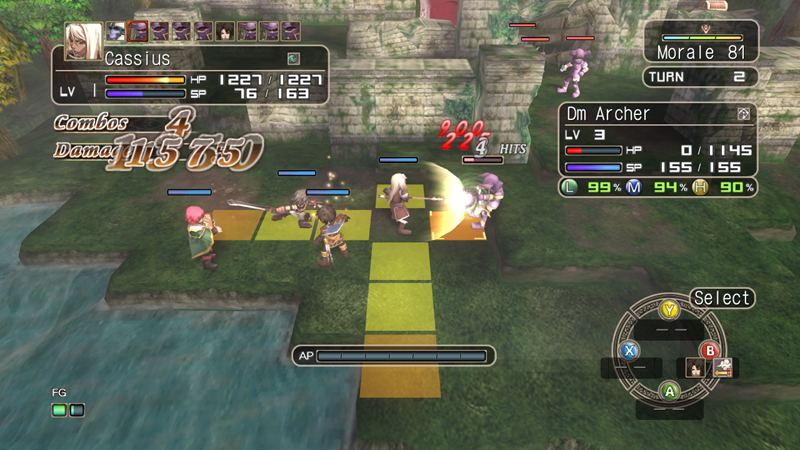olling Stone magazine disparaged AC/DC when its 1983 album Flick of the Switch incriminated the Australian hard rock band for having "made the same album nine times." Interests of the publicizing critic and bankrolling fan contended. One began by calling the record "perversely reassuring" and then, like a connoisseur, indicting band members of "self-plagiarism." The other would be satisfied as long as Angus Young matched lithe solos to brother Malcolm's riffs while Brian Johnson screeched double-entendres, bass guitar and drums added to taste. AC/DC earned both its commercial payout and Rolling Stone's frugal star rating.

Done before. And you'll do it over
and over and over and over again.Atlus, with its North American publication of Idea Factory's Spectral Force 3 has done much the same in serving fans of a dated genre — and few others.
Though Spectral Force 3's Japanese release was in August of 2006, the game shows age even greater than two years. An anime pastiche, obscure and simply grafted on, introduces a catalyst and prime antagonist — knowable only because copy on the pack identifies a young boy and the pair of wraiths who abduct him. Still-frame dialogue establishes Spectral Force's plot (a warring, mythical continent) and main characters (youthful soldiers of fortune led by a gruff captain). An ambush removes the group's leader, who is led by omens to appoint a rookie with the awkward, transliterated name of Begina.
Players take control of the mercenary group as it is reduced to dreg status, fighting skirmishes for money and building the party's ranks, power and military renown. Gameplay follows the JRPG standard — a series of menus provide the means to equip and refine each character, sell and create items, and seek work from the highest bidder.
Combat is turn-based tactical, almost purely so. Fine grids are overlaid on terrain so blocky as to resemble tabletop landscapes on a model railroader's O Scale. A squad of up to six characters may engage forces several times its size, succeeding through a combination of resourcefulness, character level, luck and the collective restraint of enemies who wait to attack in turn.
Treasures and raw materials can be collected during a battle in containers or from fallen opponents, or at random following victory. Then upon return to the assortment of menus, sold or struck over a blacksmith's anvil for stronger weapons and equipment.
And that is the game. Excepting the genre's most indiscriminate fanatics, Spectral Force 3's repetition will exhaust any player not repelled by the title's antiquity. Tactical mechanics are sound, but are plainly derivative; and even so, when did foundations ever complete a game? Characters, beyond a static portrait and uninspiring models, consist of numbers — attributes, powers, materiel are but digits and single sentences. There are no graphical depictions of acquired items — none — a complete omission last acceptable half a decade ago and unforgivable in today's tactile age.
Spectral Force's advertised features can't redeem the game. Where is the fun in choosing missions when skirmishes just above the mettle of characters require a continual, slow leveling in easier battles; or when exchanges are minor variations of one another? What's the point in recruiting nearly four-dozen characters when a limited range of classes and abilities cause every fifth one to be redundant?
Well, there is fun and a point to the game if you are a player who just can't get enough of this stuff. So we return to divergent needs. Atlus imports a fix with more of the desired sameness. For the sake of the rest of us, a judgment of Spectral Force 3: competent, tidy, practiced and very, very boring.









































